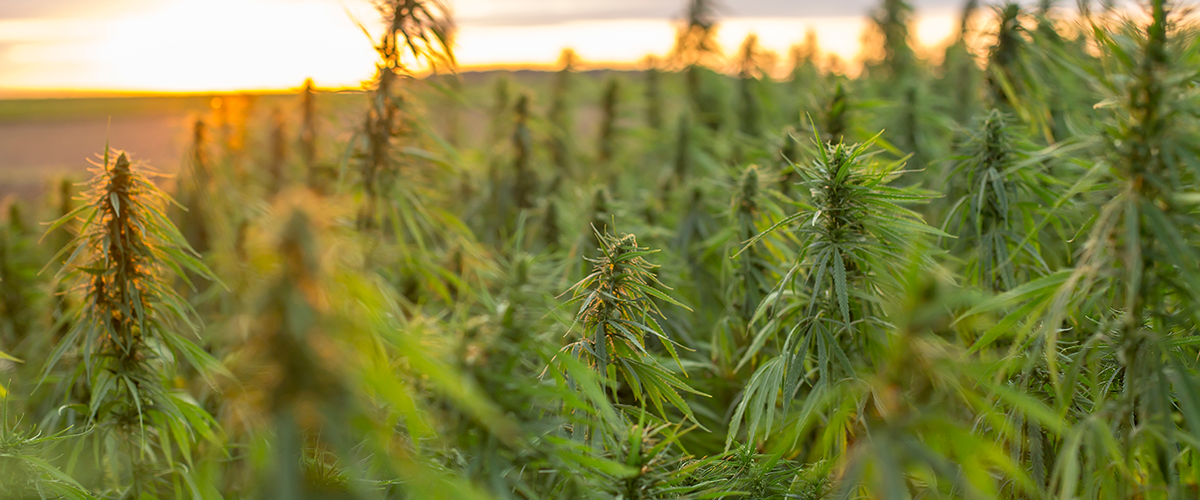The long-awaited federal rules will provide guidance for the nation’s burgeoning hemp industry, clearing the way for a multibillion-dollar market.
The U.S. Department of Agriculture (USDA) released a draft of its long-awaited regulations on hemp manufacturing on Tuesday, an important step forward in providing more clarity for the nation’s new hemp industry.
The interim final hemp rules will be formally published in the Federal Register on Thursday, after which they will be open to a 60-day public comment period. The hemp regulations are subject to change after input is received.
Domestic farmers have been struggling with industry inconsistencies or a lack of regulations since the production of hemp was made legal last December. Hemp, a variety of cannabis containing less than 0.3 percent of the intoxicating compound tetrahydrocannabinol (THC), was defined as an agricultural commodity by the 2018 Farm Bill.
Hemp has a long history in America but was eventually made illegal with the passage of the Controlled Substances Act in 1970. The passage of the 2014 Farm Bill opened the doors for state departments of agriculture and universities to grow hemp for research and pilot programs. The 2018 Farm Bill removed hemp from the Controlled Substances Act altogether, allowing for it to be commercially grown and processed nationwide.
In the first year of commercial cultivation, hemp production in the U.S. more than quadrupled, expanding to more than 128,000 acres.
The USDA needed to establish federal regulations so that individual states and Native American tribes can submit their own regulation plans and have them evaluated. Once the federal rules are officially approved, states and tribes will be able to submit their plans and have them approved within 60 days of their submission.
U.S. Secretary of Agriculture Sonny Perdue announced the new proposed hemp regulations.
“We are always excited when there are new economic opportunities for our farmers, and we hope the ability to grow hemp will pave the way for new products and markets,” said Perdue.
Hemp Regulations
The hemp regulations published by USDA encompass growing standards, testing rules for THC, and the disposal process for crops that are not up to their standards.
The regulations also provide legal protection for interstate transportation of hemp and allow for hemp producers to be eligible for federal programs like loans and insurance coverage.
Today, @USDA published an interim final rule, which establishes the U.S. Domestic Hemp Production Program and requirements governing the production of #hemp in the United States: https://t.co/hcrDIqYNx7
— USDA Ag Mktg Service (@USDA_AMS) October 29, 2019
Under the proposed rules, hemp samples have to be collected two weeks before harvesting and tested at a Drug Enforcement Agency-registered facility to ensure the crop’s THC content is acceptable. While the rules detail that hemp should have no more than 0.3 percent of THC, there will be a .06 range within which it is acceptable. So, hemp with .36 percent THC will technically be allowed.
Some are unhappy with the proposed rule of destroying crops that have a little too much THC, particularly since that crop loss is not covered by insurance. Hemp crops that do suffer from other issues will be covered by insurance.
Another provision causing controversy is a proposed 10-year ban on those with felony records from entering the industry as chief executives. However, they will be able to serve as maintenance workers.
Farmers seeking to grow hemp will need to apply for a license to do so.
The interim hemp regulations will expire in two years. Thereafter, USDA will establish final rules for the industry.

Potential Multibillion-Dollar Market
The release of the proposed hemp regulations is an important first step for clearing the way for the country’s growing hemp industry.
“At USDA, we are always excited when there are new economic opportunities for our farmers, and we hope the ability to grow hemp will pave the way for new products and markets,” said Perdue in a press release.
According to estimates from MarketsandMarkets, the U.S. hemp market could reach $26.6 billion by 2025. Projections from Grand View Research suggest the market will hit $10.6 billion by that time.
Hemp has thousands of product applications, including hemp foods, hemp clothing, hemp paper, and more. Whole Foods has tagged hemp as a top 10 food trend this year.
In recent years, the demand for hemp has surged due to it being an ideal legal source of cannabidiol (CBD), a non-intoxicating compound that can be used to promote balance and wellness.
The nation’s hemp CBD industry is awaiting regulations from the Food and Drug Administration (FDA). A lack of definitive rules on CBD has complicated matters since many farmers grew hemp crops specifically with the aim of producing CBD oil supplements.
Latest Cannabis News
Be sure to regularly visit the Medical Marijuana, Inc. news page to stay on top of the latest policy, business, and research updates related to cannabis.






